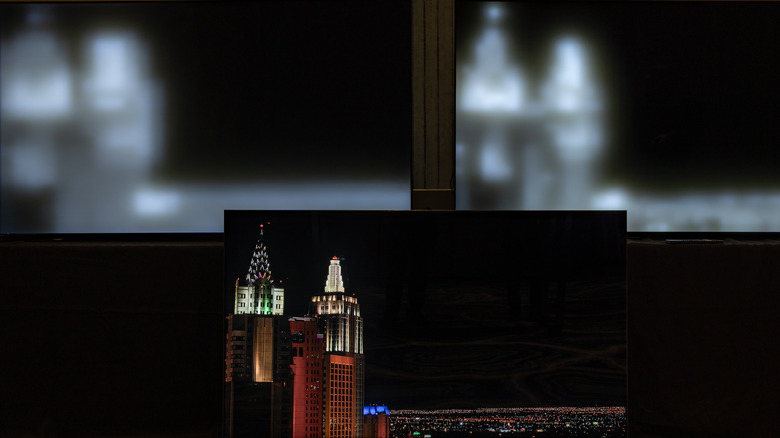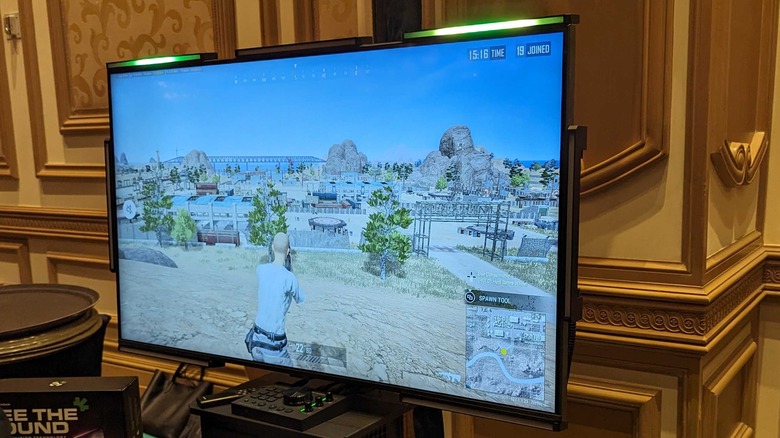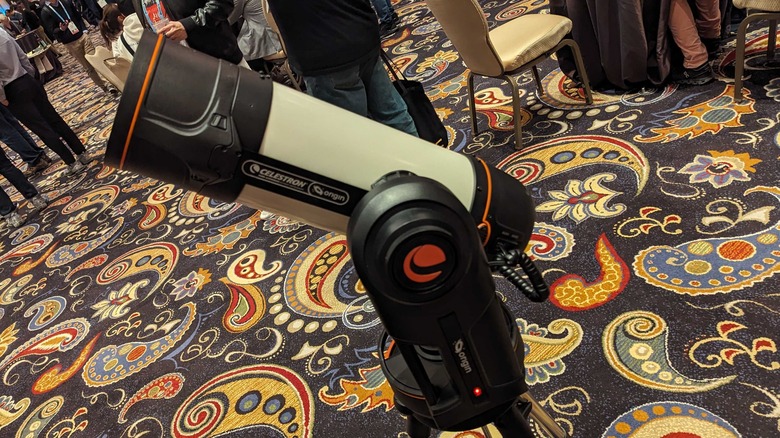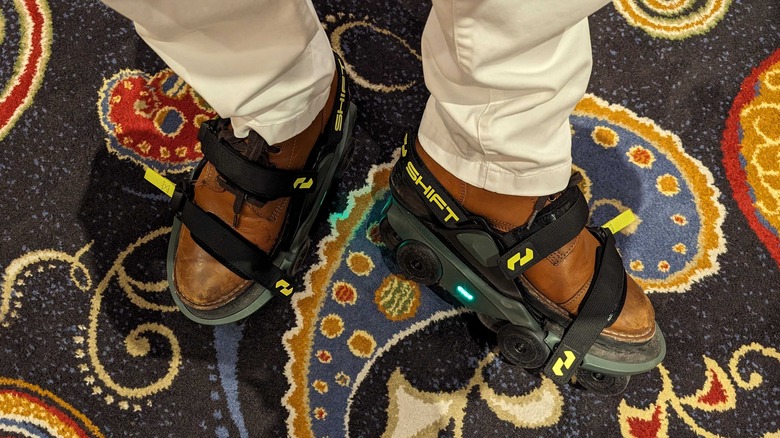The Best Moments Of CES 2024 Day 2: Electric Shoes And Smart Stargazing
January 9 marked the first official day of CES 2024, and SlashGear's second day of coverage this year. Tens of thousands of people have descended on Las Vegas in the hope of seeing the next big thing in the world of technology. In addition to the main convention, Showstoppers gave several companies a chance to showcase their products on a smaller scale.
The first official day is understandably chaotic, as everyone attempts to navigate multiple venues across the city and the crowded show floors within the venues themselves. Despite the commotion, confusion, and a rapidly increasing level of fatigue, we managed to single out a few products you should watch out for. Here are four of the most interesting things we saw yesterday at CES, including a new TV prototype from one of the industry's biggest names and a way to see the stars up close from the comfort of your own home.
Sony's new TV prototype
The new TV makes use of incredibly small LED drivers, which in turn come with a few advantages. Due to their smaller size you can fit more LEDs onto the backlight panel. The drivers, which are about the size of a sesame seed, are also capable of controlling said LEDs to a high degree. Instead of two or three dimming settings, like on, off, or medium, the controllers instead manage a close to infinite amount by controlling factors like voltage. So, thanks to the proprietary little chip, you'll be getting exceptional contrast, along with lower power consumption.
As for what the TV looks like in person — it's complicated. While the prototype looks great when side by side with another TV, you can only really appreciate it if you peel back the device's layers and look at the backlight itself. The LEDs are so precise, you can actually make out images on the backlight board alone. Sony demonstrated this first by applying a setting that makes just the backlight fire, and then by showing us a TV that has been stripped back to said backlight. A similar thing was done to a competitor's television — which has a pretty vague backlight in comparison.
Making gaming accessible
Adding accessibility to the gaming world isn't exactly a new concept: inclusiveness has been pushed by large sections of the gaming community — and many companies — for a very long time. But as there are a large number of barriers in place that can stop people from enjoying games, there needs to be a large number of solutions in place to stop anyone being left out, too.
Enter Audio Radar, a clever solution that allows deaf gamers to "see the sound" in their favorite titles. The concept involves several light bars that are strapped to the side of the TV. Then, much like a speaker can churn out audio in certain directions, Audio Radar can display lights in the direction from which in-game sounds are produced. Light mode and intensity can be customized allowing people to tailor Audio Radar to their exact preferences.
There are also use cases beyond helping those with disabilities. Audio Radar has a "selfie mode" which displays a bright white light perfect for those Zoom meetings. You can also use it to play in silence if you want to effectively blast through an all-night gaming session without waking the neighbors.
See the stars from your living room
If you're really enthusiastic about gazing into space, it may be time to confine the telescope to a cupboard and get hold of an "intelligent home observatory" instead. The Celestron Origin is capable of taking fairly detailed images of far-distant objects. It's also very easy to use. Apparently, it can be linked to a home Wi-Fi network via ethernet cable or power. It can also connect to a smartphone directly.
Once linked and left out in the open, it will align itself to the sky and start looking. From there, a map of the stars above will spring up on the app, and users can opt to take a closer look at any objects that interest them.
If you're a fan of looking upwards at night, you'll know very well that light pollution and good views of the endless void surrounding us don't really mix. However, the Celestron Origin can still perform despite these difficult conditions. According to its creators, the image won't be as good as one you would get from a noise-pollution-free sky — but hard-to-see things like galaxies will still be noticeable. The Celestron Origin is expected to launch later in 2024 and retail at just under $4,000.
The world's fastest shoes
Shift Robotics brings a pair of electrified shoes to the table that can pretty much double an individual's walking speed. The shoes are easy to use, kicking in automatically when the person in them begins walking, and slapping on the brakes when that person stops. You turn them on by lifting your right heel and twisting your foot, while a twist of the heel turns them off again. All in all, they add around 3 mph to your stride. In terms of feeling, it's a little like ice skating — but without any push-off. They feel a little heavy and ungainly at first, but you quickly get used to them. In addition to the increased pace, they're also pretty good fun.
The shoes themselves are marketed at warehouse workers and people in similar positions who spend a lot of time walking. However, there's nothing stopping you from getting your own pair — except maybe your shoe size. Though there are plans to expand the range, you're currently out of luck if you wear a woman's size 7 or below. You're equally robo-shoeless if you're a men's 14 or above.




